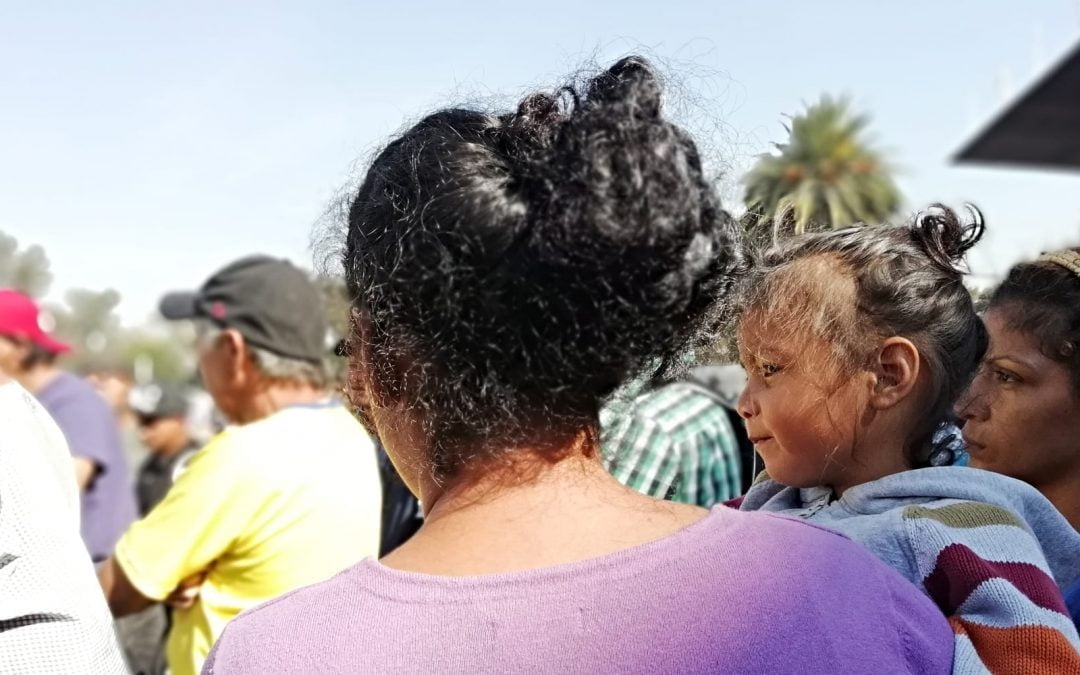Who among us, parents or grandparents, doesn’t go into our wallets – or these days, into our phones – at the slightest provocation to show off the photos of our children?
Photo albums, Facebook pages and candid videos document the journeys, the growth and the passions of our families. If it´s not captured by the camera, perhaps it didn´t happen.
I´ve received videos of my teaching sessions from sites in rural Mexico. The “classroom” was plastic chairs deployed under the trees, but the camera phones were recording it all.
Technology has supercharged these visual – and sometimes aural – records, but the impulse is not new. Art history is replete with family portraits, with the children front and center.
Art history is also full of iconic representations of historical allegory or actual events – think of Delacroix´s “Liberty Leading the People” or Leutze´s “Washington Crossing the Delaware.”
But sometimes the visual images get out ahead of history and play a role in creating it.
In June 1972, our South Vietnamese allies strafed a caravan of villagers and their own soldiers fleeing the village of Trang Bang for “safety” to the south.
Those who fled in terror included a 9-year-old girl named Phan Thi Kim Phuc, who ran naked and screaming right into the center of perhaps the most widely disseminated image of that tragic war, taken by Associated Press photographer Nick Ut.
The image went “viral” a generation before that concept existed, won a Pulitzer Prize and, perhaps most important, was a major factor in turning domestic and world opinion against that doomed and destructive war.
As for Kim Phuc, after 17 surgeries over a 14-month period in Vietnam, and further surgeries in West Germany in 1982 sponsored by chastened international donors, she regained “normal” movement, though horrible scars cover her back and arms to this day.
Her 5-year-old cousin died in his grandmother´s arms that day. As a young adult, Kim Phuc met a fellow Vietnamese exchange student in Cuba; they married in 1992 and defected to Canada, where they were granted asylum.
Kim Phuc became a Christian, established an international network of foundations to help children recover from the physical and psychological scars of war and with a co-author published “The Girl in the Picture,” which explores issues of war and peace, poverty and racism through her own experience and that of her family and her country of origin.
Why am I remembering the “girl in the picture” this week?
On Sunday, Nov. 25, another powerful set of pictures portrayed a portion of those thousands of migrants who have come north from Honduras and Guatemala – walking, and intermittently riding trucks, buses and box cars – looking for freedom from prostitution, rape, gang warfare and grinding poverty in that nation that once offered a welcome to the “tired, the poor, [the] huddled masses yearning to breathe free.”
With the border crossing at Tijuana/San Ysidro closed down, a crowd of desperate migrants attempted to scale a border fence, to present their cases for asylum, as is their right under both international and U.S. law.
In response, they were met with a shower of tear gas canisters.
Reuters photographer Kim Kyung-Hoon, wearing a gas mask, captured Maria Meza Castro, wearing a brightly colored “Frozen” blouse, frantically pulling her 5-year-old twins, Saira and Cheili, barefoot and clad only in T-shirts and diapers, away from the clouds of gas spreading across the ground.
Her son, James, who had stumbled and fallen, is outside of the photographer´s frame.
Is this what we have come to? Lobbing tear gas at children? Will this photo, like the picture of Kim Phuc, be part of a great movement of shame and compassion that brings us to our senses? Whose children are in the photos from the border?
If we believe that God is the Creator of the entire human family, then these are photos of our children.
Our national immigration debate has suffered from the syndrome of “on the other hand.” Yes, the suffering migrants, but on the other hand, the security of our borders!
One of the greatest of this generation´s progressive theologians once said to me, “But we can´t simply have open borders.”
I find myself thinking, “Why not?”
Chronic inequality notwithstanding, we are the richest nation in the history of the world.
If money can fly across international borders at the push of a button, why can´t people fly toward safety and opportunity and find welcome?
If Saira and Cheili and James ever make it to the U.S., like “Dreamers” before them, they will most likely speak English with native fluency, pursue an education, start families, correct the growing imbalance in our society between working folk and retirees, and be the most loyal and grateful of Americans.
But for me as a Christian, the most compelling argument is from the lips of Jesus. “Let the little children come to me, and do not stop them; for it is to such as these that the kingdom of heaven belongs” (Matthew 19:14).
Adjunct professor of theology at Palmer Seminary in St. Davids, Pennsylvania. He served previously as senior pastor of First Baptist Church in Portland, Oregon, and as professor of theology and ethics at Central Baptist Theological Seminary. Wheeler appeared in the EthicsDaily.com documentary, “Sacred Texts, Social Duty.”


